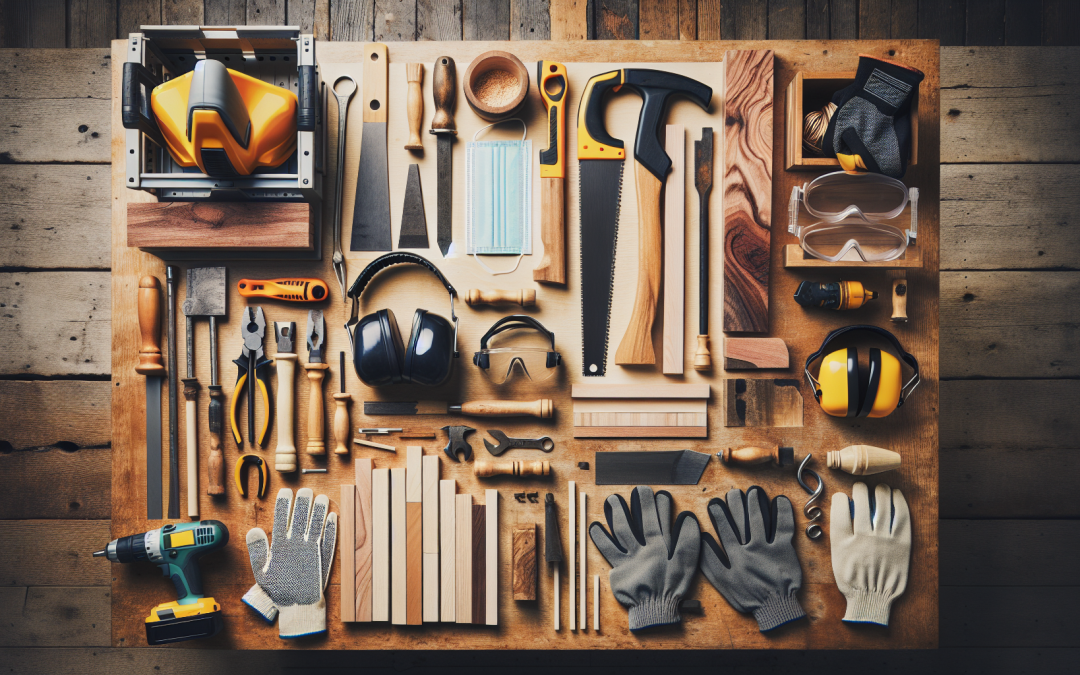Woodworking can be an extremely rewarding pursuit when approached with respect and caution. An essential aspect often overlooked by beginners is the use of Personal Protective Equipment (PPE). This critical safety investment can protect crafters from common woodworking hazards and ensure a much more enjoyable and safe journey through the woodworking landscape.
According to our post on ergonomics and woodworking safety, understanding and implementing basic safety measures such as the use of correct PPE can lead to enhanced productivity and better health. In this blog post, we’ll dive further into the realm of essential PPE every woodworker should have.
Donning the Shield: The Essentiality of Safety Glasses
The eye, while a small organ, is one of the most invaluable. It is also highly vulnerable in a high debris area such as a woodworking environment. Wood dust, splinters, or even sparks from power tools can cause significant ocular damage. This is why safety glasses are non-negotiable in every woodworker’s PPE kit.
As highlighted in our power hand planes post, selecting the right tool is critical to woodworking. The same applies to safety glasses. Choose glasses that are comfortable, anti-fog, and impact-resistant. Consider glasses with side protection for added safety.
The Subtle Art of Hearing Protection
Woodworking, especially when working with power tools, can generate a significant level of noise. Repeated exposure to such noise levels can lead to hearing issues or even permanent loss. Thus, ear protection devices such as earmuffs or earplugs are more than just a comfort accessory; they are a health necessity.
It is also essential to understand that all ear protection is not created equal. Depending on the tools you are using for different projects, you may need different levels of noise reduction. Be mindful of the Noise Reduction Rating (NRR) of each device, and do not hesitate to upgrade when necessary.
Dust Masks: More Than Just an Accessory
Wood dust is a major by-product of any woodworking activity. When inhaled, it can cause a range of respiratory issues such as allergies, asthma, or even serious conditions like lung cancer. That is where a good dust mask or respirator steps in, filtering out these harmful particles, and providing you with clean air to breathe. Pair your dust mask with a reliable shop vacuum as outlined in our space-saving woodworking equipment guide to keep your workshop and lungs dust-free.
Providing a Hand(y) Shield: Gloves
Hands are the primary tools of a woodworker. Protecting them from cuts, abrasions, or burn injuries caused by tools or chemicals is of paramount importance. Leather or cut-resistant gloves can offer a good balance of protection and dexterity. Remember that our guide on essential woodworking tools reminds us that not all tools are glove-friendly. Thus, it’s crucial to evaluate the nature of the task before choosing to wear gloves.
Ensuring Complete Coverage: Additional PPE
While the PPE’s mentioned above form the core of any woodworker’s safety gear, additional equipment might be required based on specific tasks. For example, welding helmets if you are metalworking, anti-vibration gloves when using power tools, or steel-toed boots to protect your feet.
Moreover, a disposable or washable apron can protect your clothes from fine dust particles and offer a certain degree of protection against flying debris. Always refer to the safety guidelines in your woodworking manual or advanced woodworking guides to understand the appropriate PPE for specific tasks.
Remember, effective use of PPE is the foundation of a safe and productive woodworking journey. Pair it with adherence to general safety guidelines and learning from mistakes, as covered in our blog on common woodworking mistakes, and you are all set for your woodworking adventure utmost safety.

